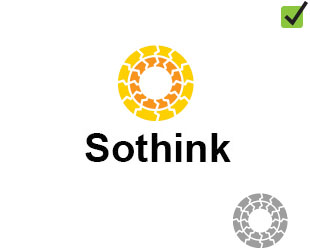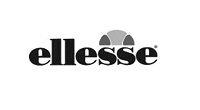6 Common Mistakes You Should Avoid for Good Logo Design
With the power of the web and internet, it has become more and more important for a company to develop its online business. One of the easiest ways to distinguish a company from various competitors is by its good logo design. However, creating a unique and memorable logo is not as easy as it sounds.
Through my research in recent days, I collect some useful tips for logo designing. Here I list 6 common mistakes in logo designing just for your reference.
1. Poor Font Choice
 |
 |
 |
When it comes to creating a logo, choosing the right font can make or break a design. Font choice can often take as long as the creation of the logo mark itself and it should not be done briskly. Spend time researching all the various fonts that could be used for the project, narrow them down further, and then see how each one gels with the logo mark. Don't be afraid to purchase a font, modify one, or create your own. Also, keep in mind how the logo's font could be used across the rest of the brand identity in conjunction with other fonts and imagery.
2. Has Too Many Fonts
 |
 |
Using too many fonts is like trying to show someone a whole photo album at once. Each typeface is different, and the viewer needs time to recognize it. Seeing too many at once causes confusion. Using a maximum of two fonts of different weights is standard practice. Restricting the number of fonts to this number greatly improves the legibility of a logo design and improves brand recognition.
3. Uses Raster Images
 |
 |
Standard practice when designing a logo is to use vector graphics software, such as Logo Maker. Using raster images for logos is not advisable because it can cause problems with reproduction. While Photoshop is capable of creating very large logos, you never know for sure how large you will have to reproduce your logo at some point. If you zoom in enough on a raster graphic, it will appear pixelated, making it unusable. Maintaining visual consistency by making sure the logo looks the same in all sizes is essential.
4. Relies on Special Effects or Color
 |
 |
If a logo requires color or special effects to make it a strong logo, it's not a strong logo. To get around this, work in black and white first and then add the special effects or color later. This allows you to focus on the shape and concept rather than the special effects. Don't use drop shadows, embossing, or other layer styles to gloss up logos - a good logo will stand on its own. You can also make different variations of a logo to ensure it works in colour or grey scale.
5. Too Complex
 |
 |
 |
Simple logos are more memorable as they allow for easier recognition; however, for a logo to be memorable and stand apart from the crowd, it must have something unique about it, without being too overdrawn. Not only does simplicity make a logo more memorable, but it also makes the logo more versatile, meaning it can work over more mediums.
6. Relies On Trends

Trends (whether swooshes, glows or bevels) come and go and ultimately turn into cliches. A well-designed logo should be timeless, and this can be achieved by ignoring the latest design tricks and gimmicks. The biggest cliche in logo design is the dreaded "corporate swoosh," which is the ultimate way to play it safe. As a logo designer, your job is to create a unique identity for your client, so completely ignoring logo design trends is best.
These logo design tips should help you create good logo design in theory. However, to design better logos, you need continual practices. Come on!

- Philip Tero
- Philip Tero, who is 32 years old, has been engaged in web designing for over 10 years. He makes great contribution to web designing field. He writes frequently for well-known online publications and also on his own web design blog, Web Designer Notebook.
![]() Other Articles
Other Articles
- Design a Custom Group Logo
- Making an Impressive Corporate Logo
- Impressive Association Logo Helps in Association Branding
- Logos Software VS Traditional Logo Design Process
- 30 creative company logo designs for inspiration
- 30 brilliant vector logo designs
- Vital tips for effective website logos design
- How to import and re-use vector graphics for logo creation?
- Logo creators VS logo designers
- 100+ Cool Logo Designs for Inspiration
- How to make band logos in minutes?
![]() Logo Maker Basic
Logo Maker Basic
![]() Logo Maker Pro
Logo Maker Pro
![]() Tags
Tags

